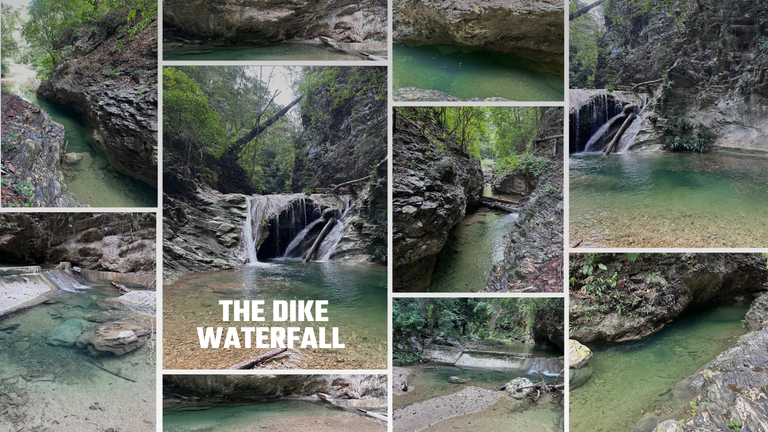
They say that those who persevere, achieve. The truth is, I still keep asking myself how many more times I need to persevere. To understand this post, you should read the first part I wrote a week ago and left unfinished. I recommend reading this post while listening to “Impossible” by James Arthur. I wrote each fragment of this post while listening to this song.
Visiting Totoremo, Urdaneta Municipality, Lara State, Venezuela, was a real challenge. A challenge very similar to the more than three years I have spent writing on Hive. The reason is that it requires bravery and perseverance. I’ll save the noise for later.
As I continued along the Totoremo Wells, I came across a water trail. Everything amazed me because of its color and surroundings. Foolishly, I took a photo; I say it was foolish because it came out blurry. The phone’s camera had gotten wet. The thing is, I had just bathed and didn’t realize I had wet it.
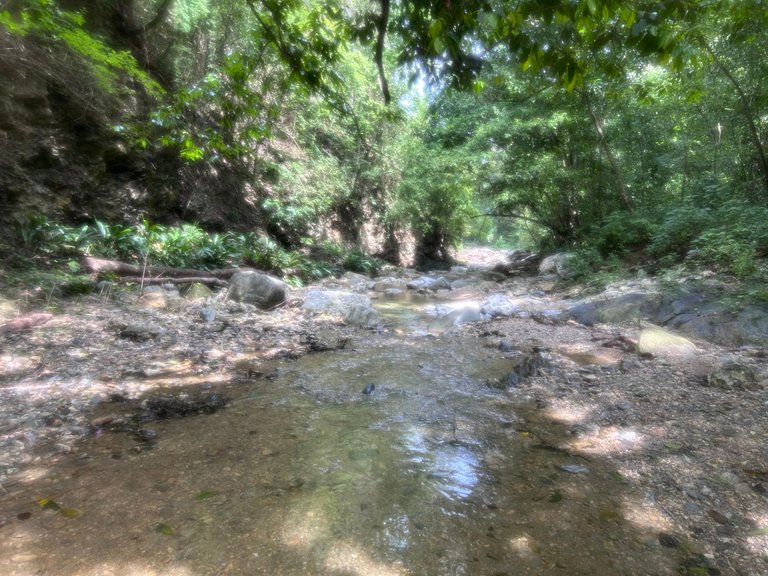 | 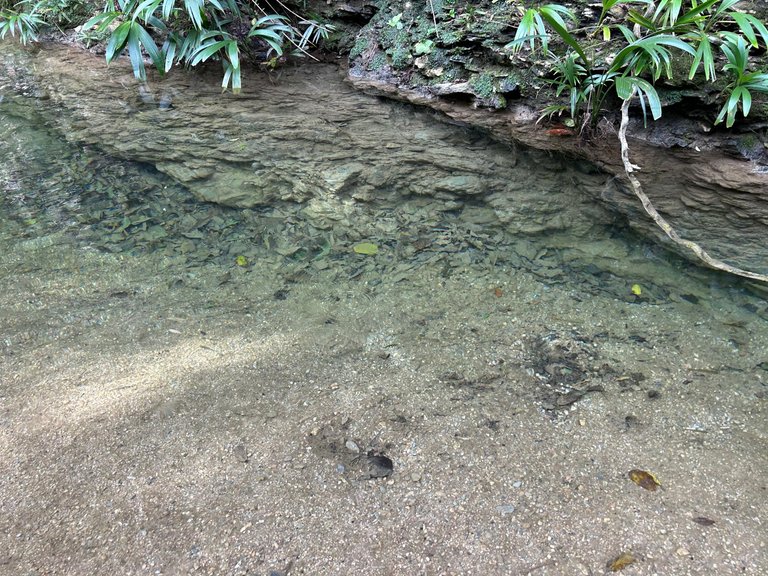 |
As I kept walking, what intrigued me the most was the color of the water. How can a place in the middle of the mountains have water this color? I still don’t understand! I’ll leave a photo for you to see the relationship between the rocks, plants, sand, and water. It’s beautiful!
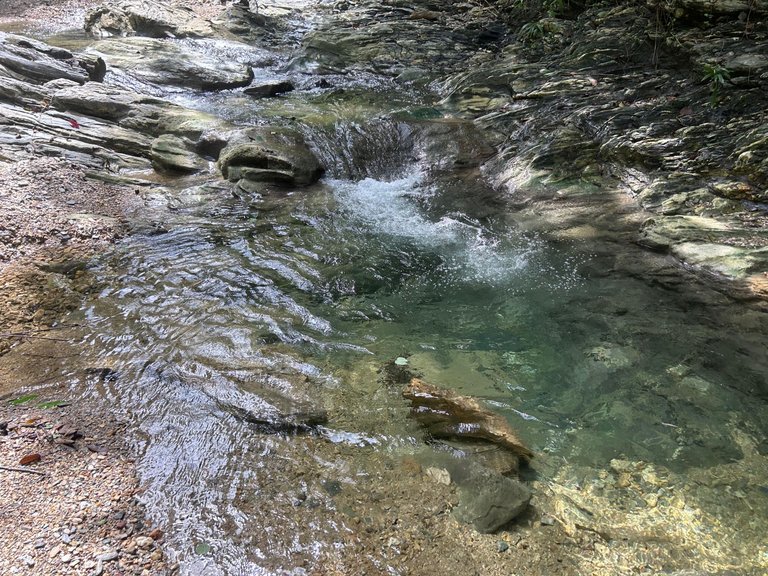
With my brother and friends, I came across an area with more rock formations in the riverbed. In some parts, there were small, deep water wells. If you stepped in them, you could twist your ankle by accident (this is something to avoid since the town is far from this site, and medical help isn’t easily accessible).

According to one of my friends, this place is called Totoremo Wells because of the many small wells, but it’s not the only attraction there. That’s what revitalized me and made me eager to keep exploring.
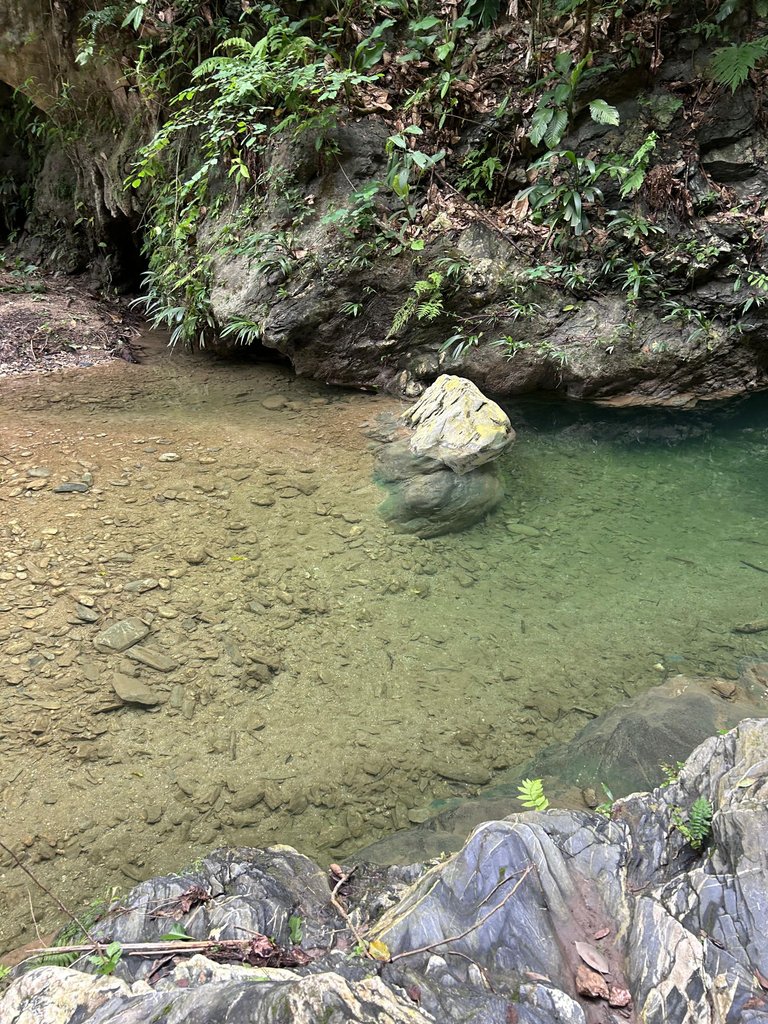
Walking we found another stretch of the river. In this part, the stones were more scattered. They were not all grouped together; despite that, the water was very shallow there. It wasn't a place worth swimming in.
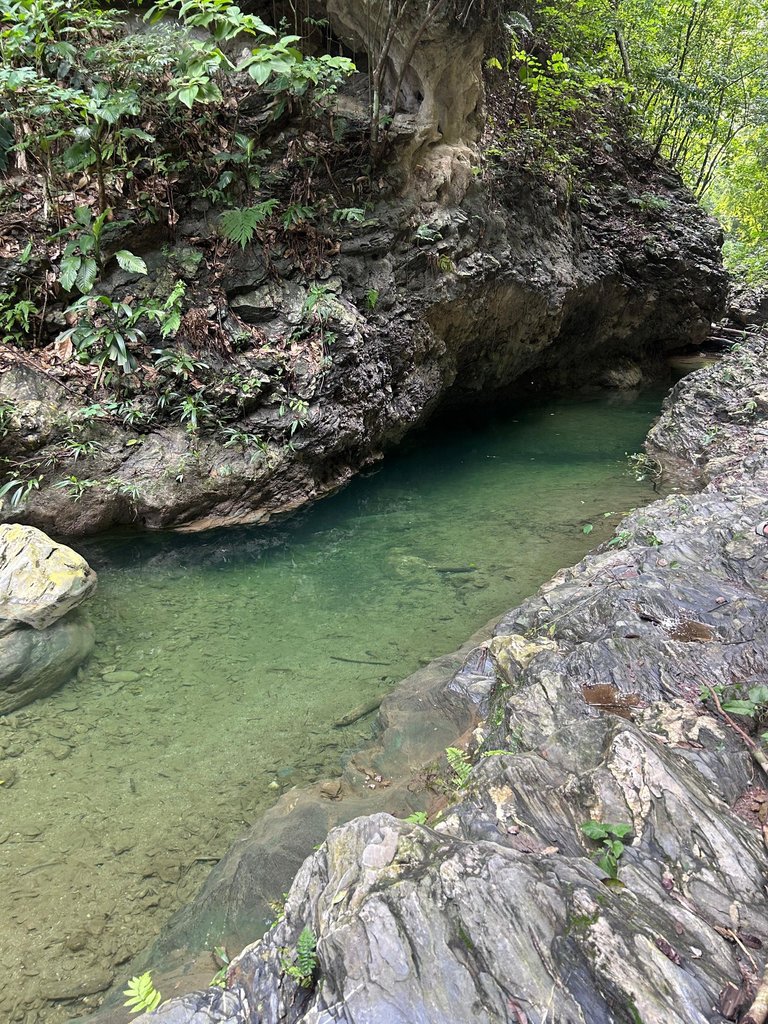
After passing the previous spot, we found a spectacular site. There was an amazing well between two rock formations. What was interesting was that the well had the shape of a riverbed. Clearly, the river had eroded the rocks to follow this path.
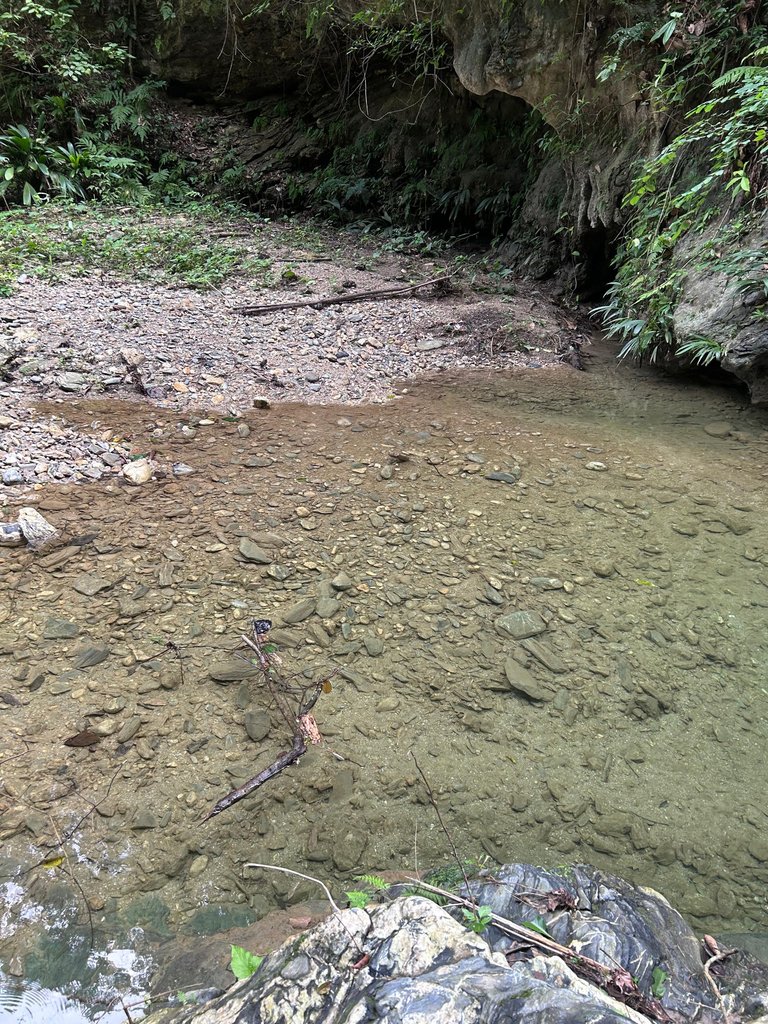 | 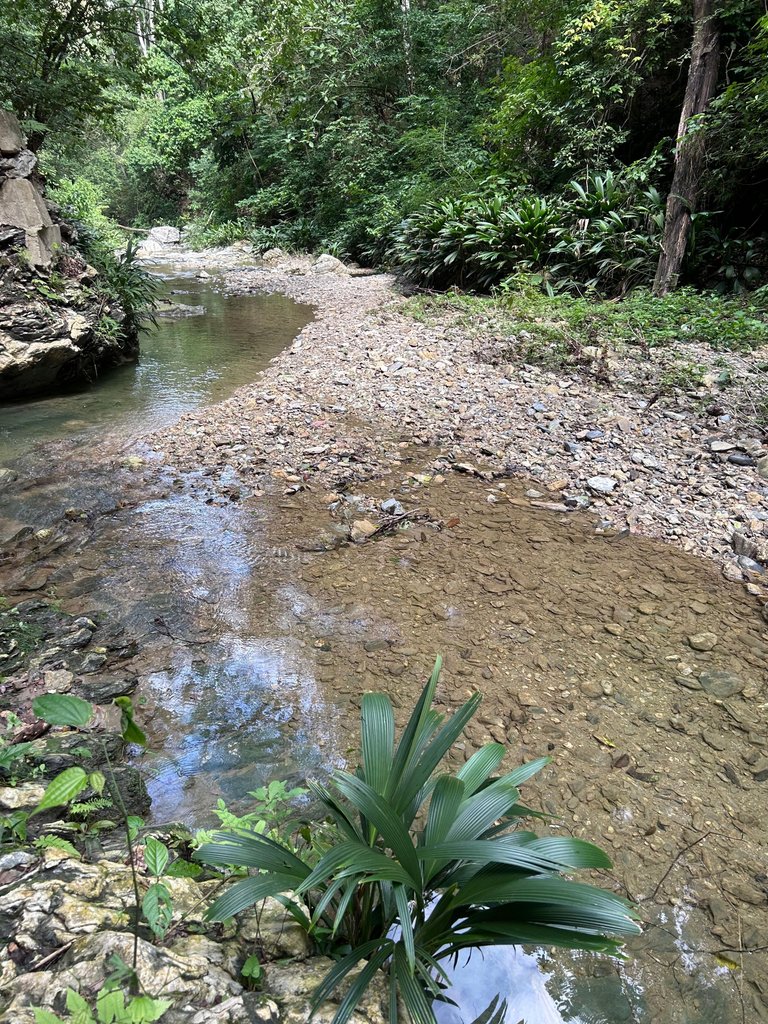 |
At that moment, my mind began to shine. I told myself that something even more fascinating must be further ahead if I kept walking. All I did was follow the natural flow of the river, which changed due to the natural shape of the landscape.
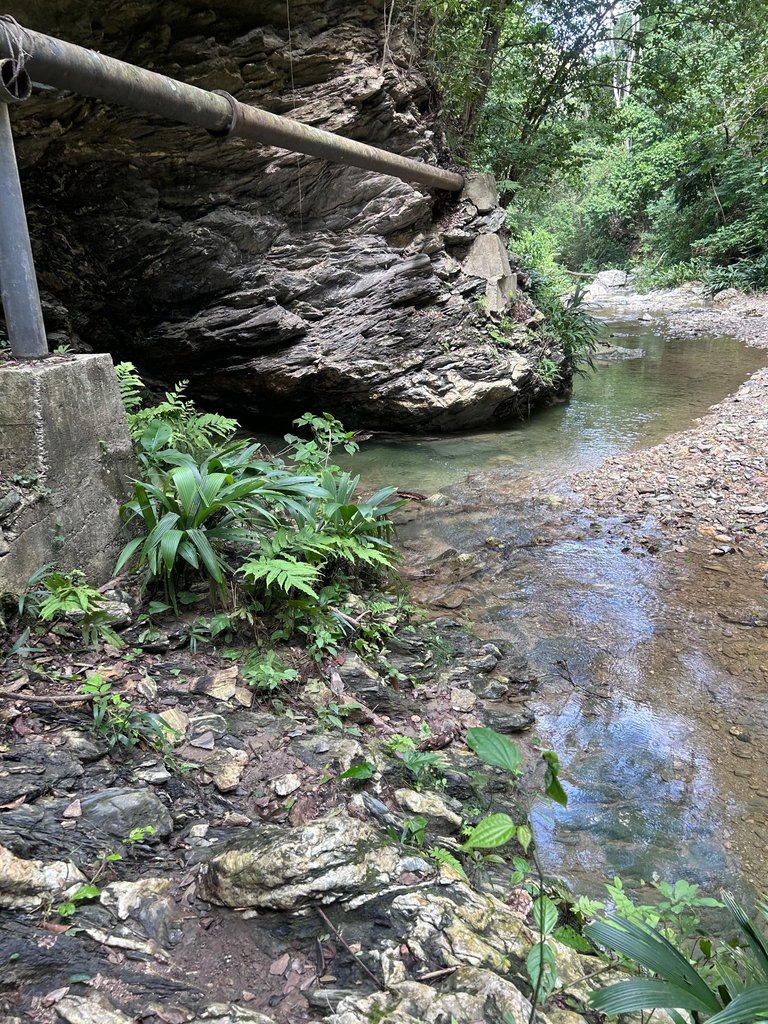
Something intriguing is that, in the previous post, I mentioned a water pipe that served as our guide. Coincidentally, to get here, I had to follow it along with my brother and friends. What was fascinating about this spot was how the pipe was raised. It passed over the mountain, suspended in the air.
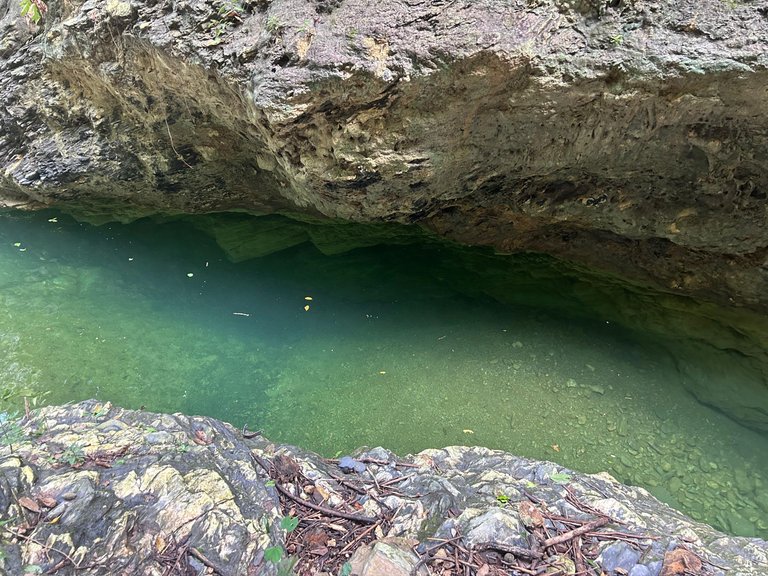
For the first time, my imagination turned into reality in this place. I simply dedicated myself to observing how beautiful everything was at that moment. The thing is, there was another extension of the riverbed that passed through two rock formations. The water color and depth were incredible. I took a photograph that allows you to see it in detail.
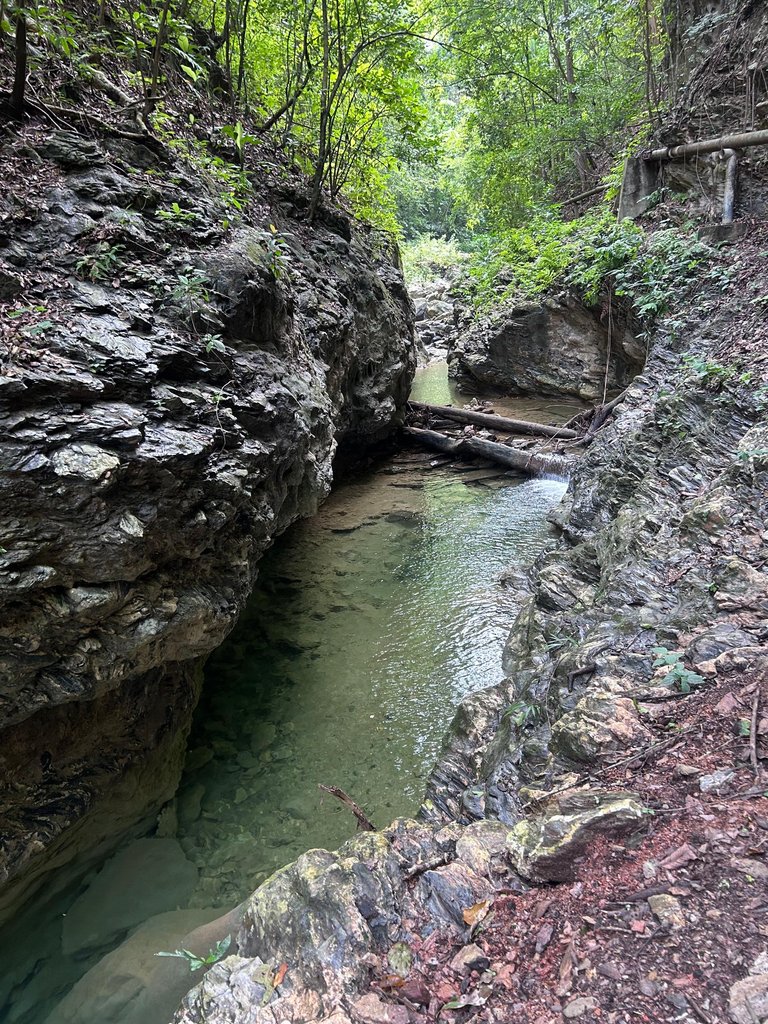
I decided I should capture the essence of the place from another perspective, where you can clearly see the water pipe indicating the path I had to take. I liked this photograph because it shows a bit of how beautiful the place was. At this point, 40 minutes had passed since the middle of the way (I mentioned this in the previous post).
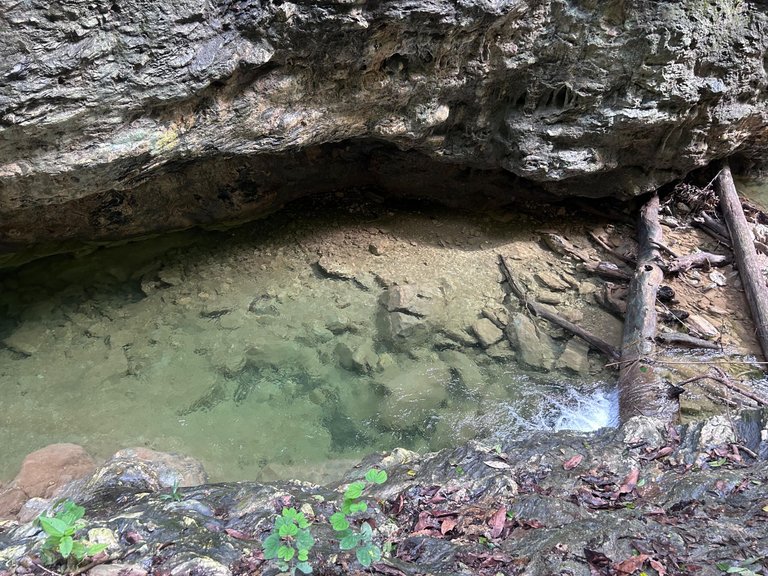
The most unbelievable thing about the water pipe is that it’s still there. The rust clearly shows how old it is. Even though it’s a distorting element, it becomes part of the natural space and the way infrastructure used to be built in Venezuela.
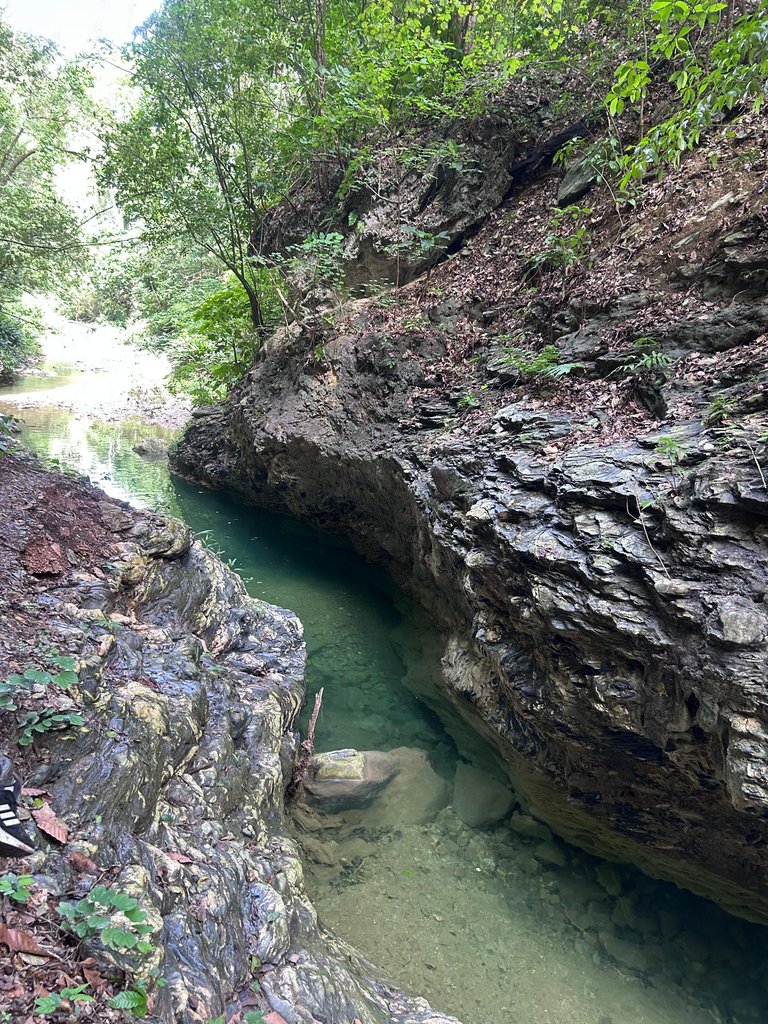
As I continued walking, I became even more impressed by the natural beauty of the place. It’s incredible how nature behaves and creates extraordinary scenes among itself. I say this because of the relationship between the water, the plants, and the natural cuts in the mountains.
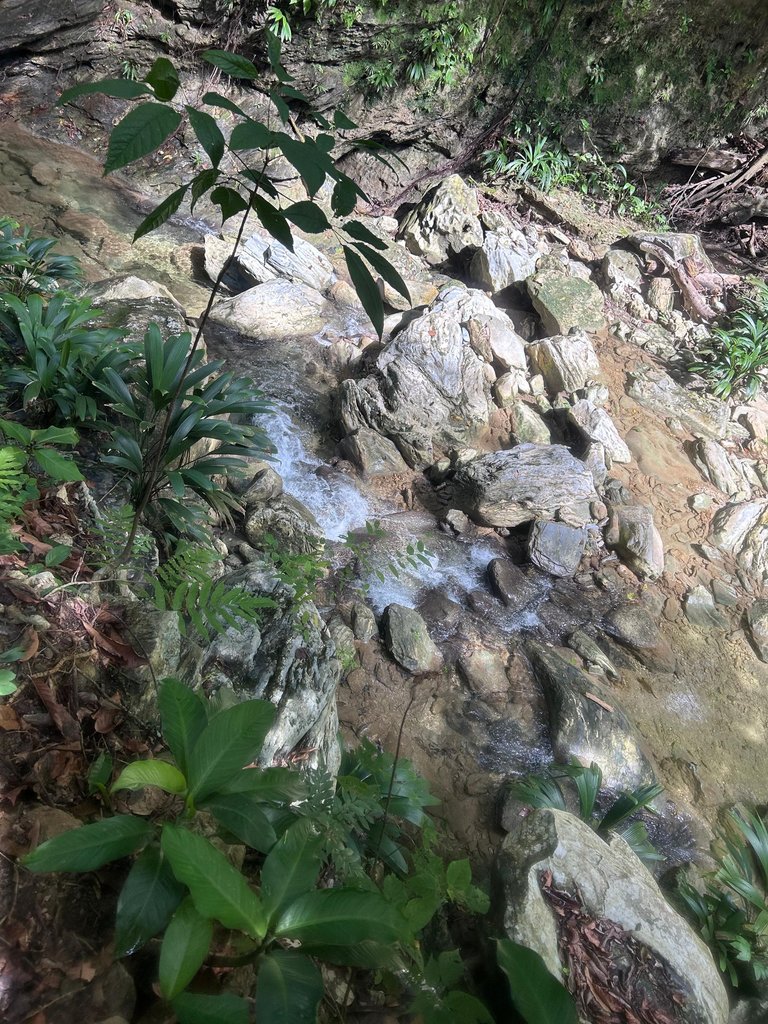
After those beautiful scenes, where I wanted to swim, I kept walking. The path was a bit more complicated; there were many rocks and natural obstructions. At this point, I was tired again.
The next stop was a kind of dam that created a scene straight out of a movie. The water color was equally wonderful; however, behind the small dam, there were many trees.
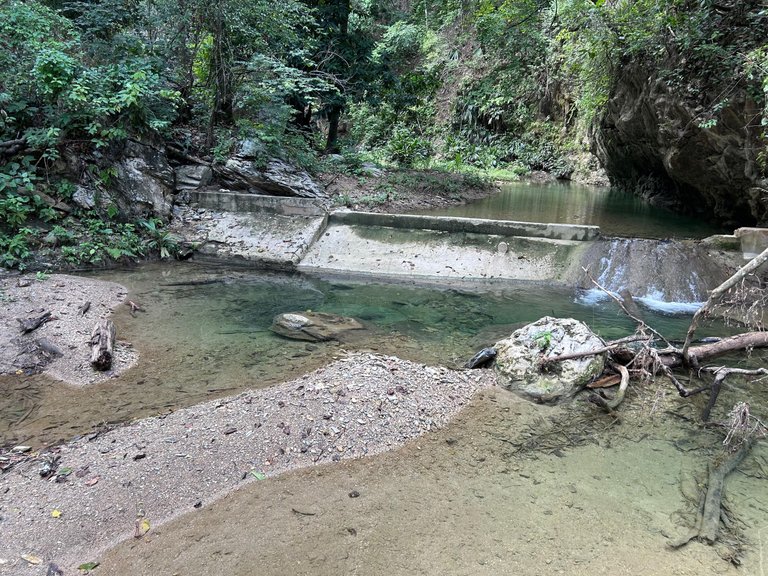
One interesting aspect is that the dam no longer worked as it should. The openings or sluice gates were blocked. However, it still fulfilled its role of holding the river’s water.
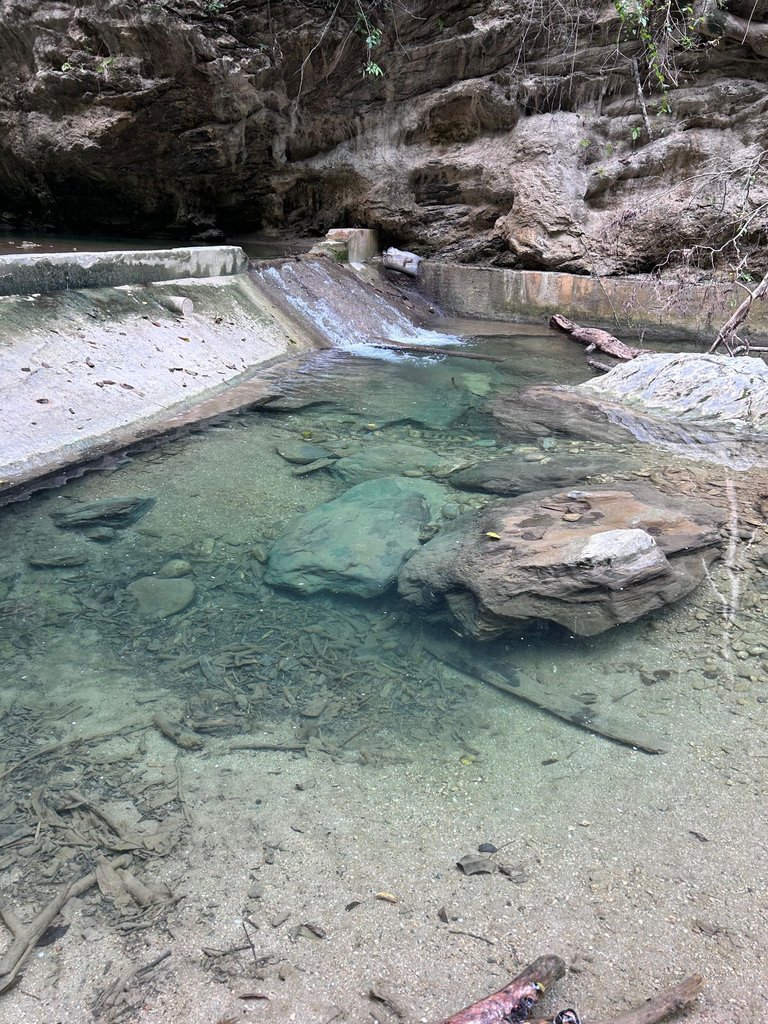
Under the dam, I found some rocks that might have been moved by the river or fallen from the mountains above. I also imagined those rocks could have damaged the small dam.
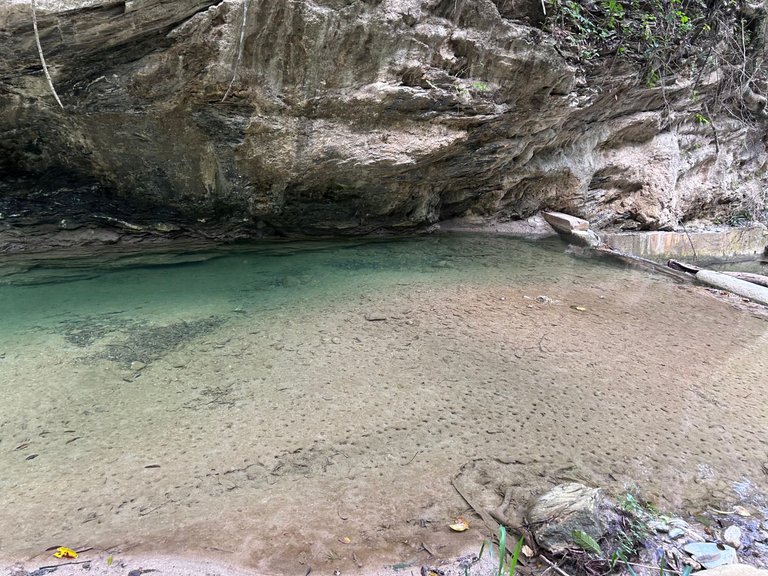
What’s interesting here is the rock formations of the mountains. The water collects at the edges or below the mountain slopes. That pooling makes the water change color and become attractive.

These scenes can’t be seen in many places. It’s a charming phenomenon, but visually immersive. In my view, it’s what makes you want to be there and be amazed.
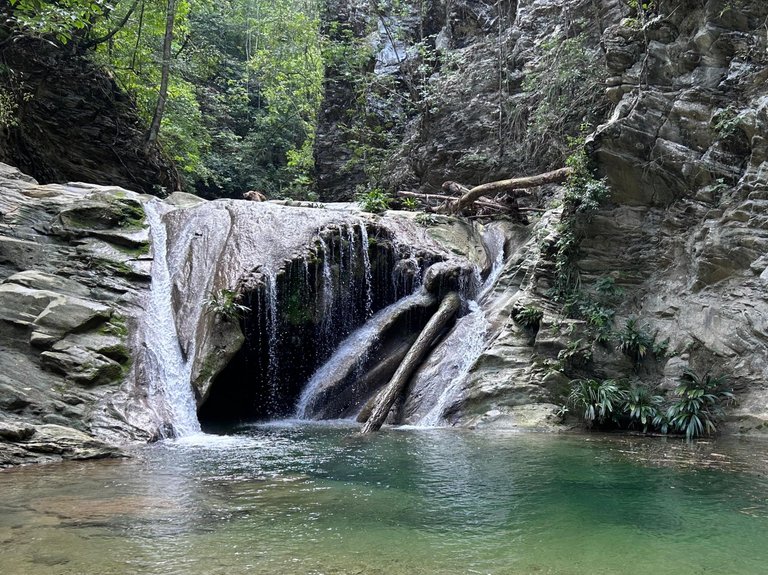
Finally, I reached the place I had been longing for. The end of this journey was the "The Dike" waterfall. The waterfall was small, but it had an incredible water well beneath it. I told myself: the walk was worth it.
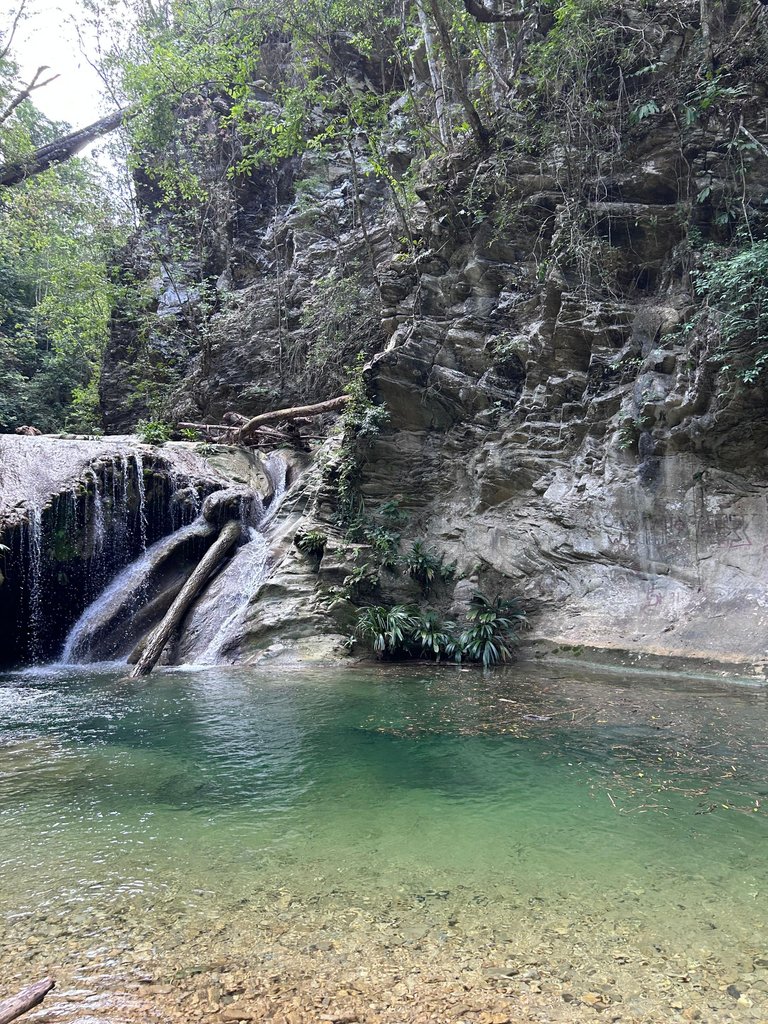 | 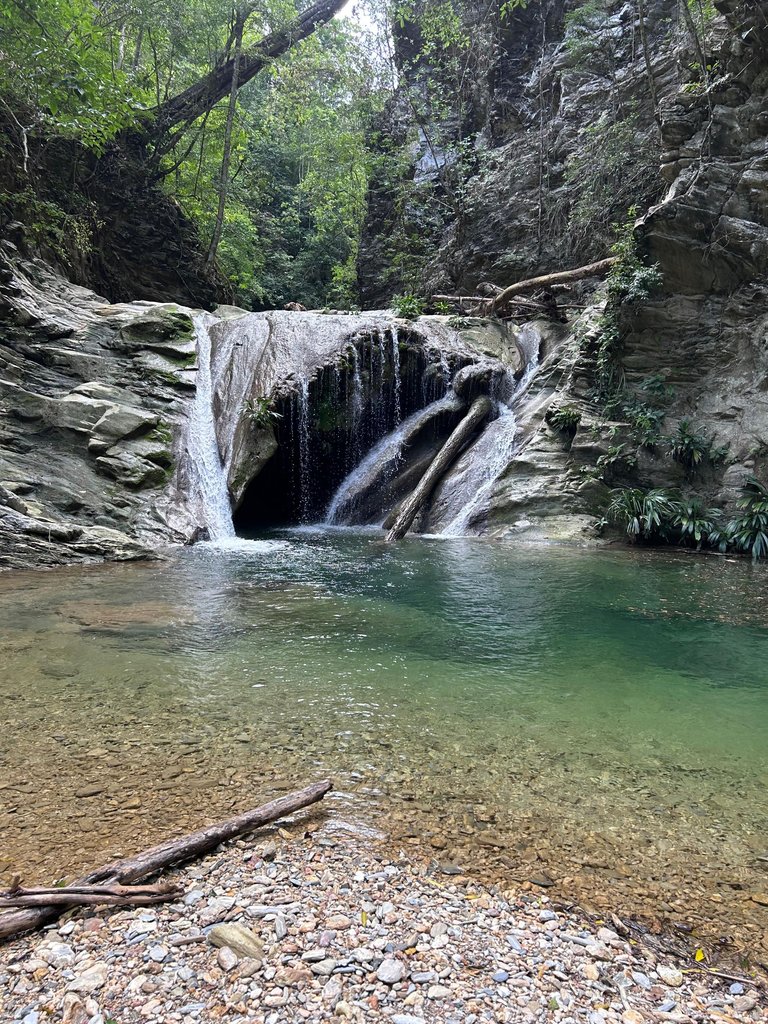 |
Upon reaching the waterfall, you feel the power of nature that it possesses. The sound of the water is enchanting, and the temperature is pleasant. Also, since there are mountains behind the waterfall, the sun isn’t directly overhead.
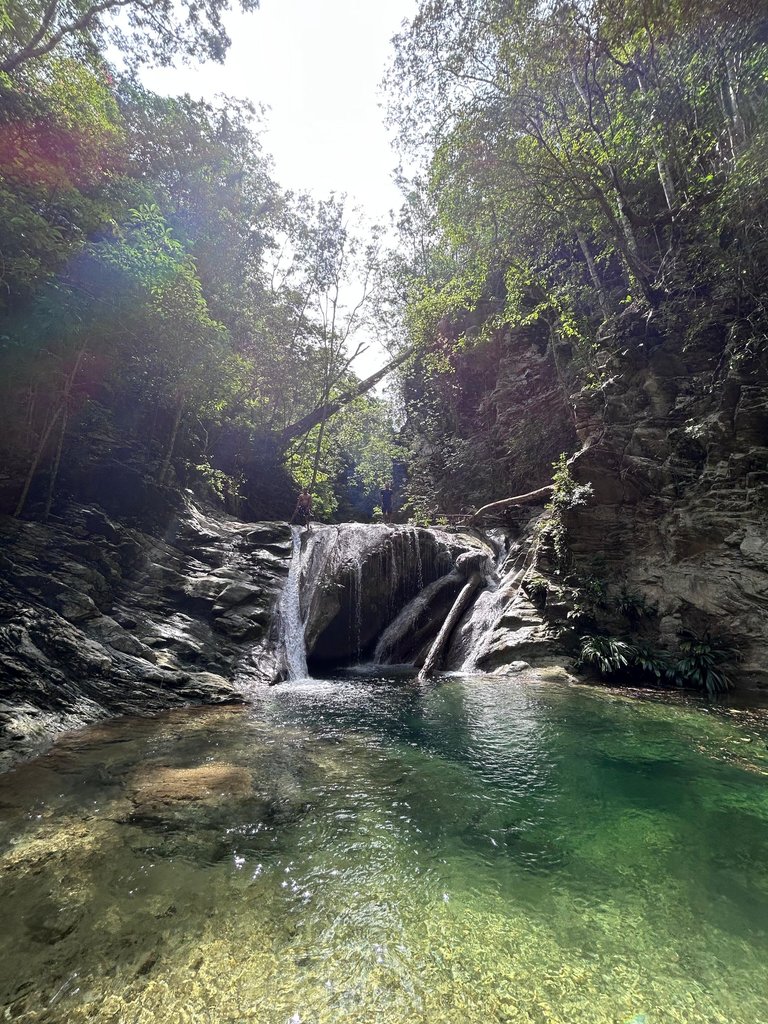
The waterfall was nestled among the mountains, and the sides had interesting rock formations. The rocks had irregular shapes, and there were trees with deformed growth. They weren’t the typical 90-degree trees we usually see.
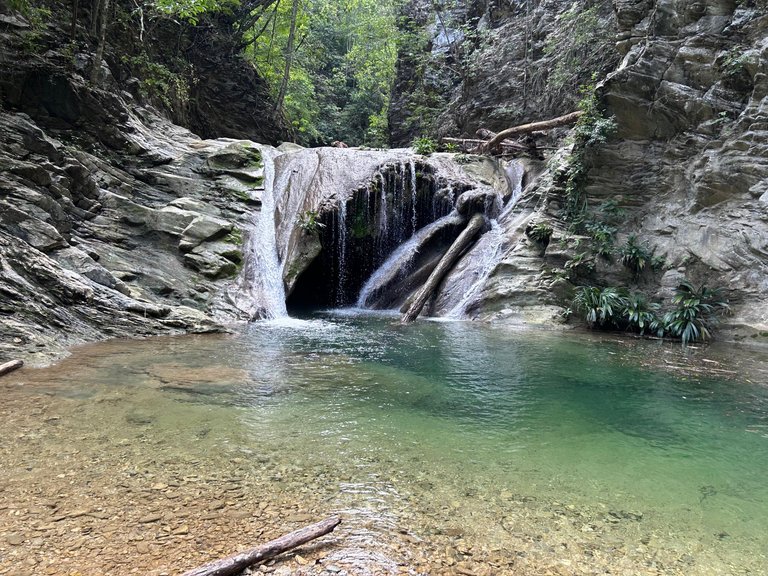
What’s even more fascinating is that there was a tree trunk above the waterfall, showing that it had fallen, but it made the "The Dike" waterfall even more magical and beautiful. Every element of nature there was magnificent.

If I had to describe my experience getting here, I would say it was really difficult due to the challenge of exploring these places. It requires a lot of physical strength and energy. It’s advisable to do it with others to enjoy the story better.
The space itself makes you connect with it. Therefore, there’s no need for headphones; you’ll feel connected with everything as you walk through the Totoremo Wells. There are no people around, just you, your friends, nature, and the riverbed.
Each step is followed by a new experience, a photograph, and a memorable memory that won’t be easily forgotten. I would also love for there to be wooden walkways and cell service. This could be possible in the future, depending on changes in the country and the recognition of tourism as a great potential. Still, it was very interesting to discover each well, the dam, and the waterfall.
Life is about betting on and living each experience. I mean, betting on seeing new things that surprise you. To summarize: The Dike waterfall has its own charm that generates calm. The way the water flows there is incredible. I managed to capture a special and captivating photograph. The scene is beautiful.
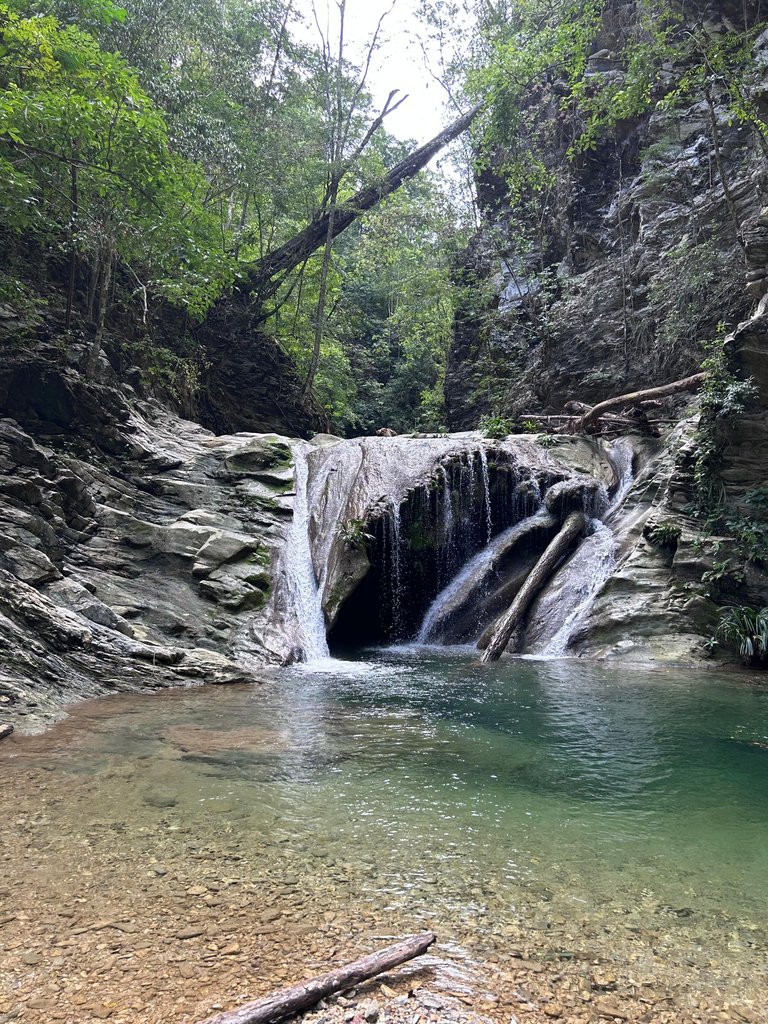
I learned to love each experience, realized that I must love the present, and understood that this is part of my journey. This year will be unprecedented, but most of all, full of memorable moments that I will share and pin here with you.
Original content by @neruel. All rights reserved ©, 2025. Images: iPhone 15. English translation and grammar correction: Chatgpt - DeepL - Languagetool.
SPANISH VERSION (click here!)
Cascada El Dique - Urdaneta: Part 2
Dicen que quien persevera alcanza. La verdad es que aún me sigo preguntando cuántas veces más tengo que perseverar. Para que puedas entender este post, debes leer la primera parte que escribí hace una semana y dejé a la mitad. Te recomiendo leer este post mientras escuchas “Impossible”, de James Arthur. Escribí cada fragmento de este post escuchando esta canción.
Visitar Totoremo, Municipio Urdaneta, Estado Lara, Venezuela, fue un verdadero desafío. Un desafío muy similar a los más de tres años que llevo escribiendo en Hive. La razón es que debe estar cargado de valentía y constancia. Dejaré el jaleo para después.
Siguiendo mi camino por los Pozos de Totoremo, me encontré con un sendero de agua. Todo me impresionaba por su color y entorno. Tontamente, capturé una fotografía; digo que fui tonto porque salió borrosa. La cámara del celular se había humedecido. La cuestión es que, anteriormente, me había bañado y no me di cuenta de haberla mojado.
Al seguir caminando, lo que me causaba mayor intriga era la coloración del agua. ¿Cómo puede existir un lugar en medio de las montañas con agua de este color? ¡Aún no lo entiendo! Dejaré una fotografía para que veas la relación entre las rocas, las plantas, la arena y el agua. ¡Es hermosa!
A medida que seguía avanzando junto a mi hermano y mis amigos, me encontré con un área que tenía una mayor formación rocosa en el cauce del río. En algunas partes, había pequeños pozos de agua profundos. Si pisabas en ellos, por error podrías torcerte el pie (esto es algo que se debe evitar, ya que la ciudad está muy lejos de este sitio; no tendrás ayuda médica fácilmente).
Según uno de mis amigos, este lugar se llama Pozos de Totoremo por la cantidad de pequeños pozos que hay, pero no es el único atractivo allí. Eso es lo que me revitalizó y provocó mis ganas de seguir explorando.
Caminando, encontramos otra extensión del río. En esta parte, las piedras estaban más dispersas. No estaban todas agrupadas; a pesar de eso, el agua era muy baja allí. No era un lugar donde valiera la pena bañarse.
Luego de pasar el lugar anterior, encontramos un sitio espectacular. Allí había un pozo increíble en medio de dos formaciones rocosas. Lo interesante es que el pozo tenía la forma de cauce de río. Evidentemente, el río erosionó las piedras para poder tomar este recorrido.
En ese instante, mi mente comenzó a brillar. Me dije a mí mismo que algo más interesante habría más lejos si seguía caminando. Lo único que hice fue seguir el comportamiento natural del cauce del río, que cambiaba debido a la forma natural del paisaje.
Algo interesante es que, en el post anterior, comenté que había una tubería de agua que nos servía de guía. Casualmente, para llegar aquí, tuve que seguirla junto a mi hermano y mis amigos. En este sitio, lo interesante fue la manera en que la tubería estaba levantada. Pasaba sobre la montaña, aéreamente.
Por primera vez, mi imaginación en este lugar se transformó en realidad. Simplemente, me dediqué en ese momento a observar lo hermoso que era todo. La cuestión es que había otra prolongación del cauce del río que pasaba por dos formaciones rocosas. El color del agua y la profundidad eran increíbles. Tomé una fotografía que permite ver eso detalladamente.
Decidí que debía capturar la esencia del lugar desde otra perspectiva, donde también se ve claramente la tubería de agua que indicaba el camino que debía recorrer. Esta fotografía me gustó porque muestra un poco de lo hermoso que era el lugar. En este punto, ya habían pasado 40 minutos desde la mitad del camino (esto lo menciono en el post anterior).
Lo más increíble de la tubería es que aún está allí. El óxido deja muy claro que es muy vieja. A pesar de que es un elemento distorsionador, se vuelve parte de la misma forma del espacio natural y de la manera en que se construía infraestructura en Venezuela.
A medida que seguía caminando, quedaba aún más impresionado por la belleza natural del lugar. Es increíble cómo la naturaleza se comporta y crea escenas extraordinarias entre ella. Lo digo por la relación entre el agua, las plantas y el corte natural en las montañas.
Luego de esas escenas tan hermosas, y donde quería bañarme, seguí caminando. El camino era un poco más complicado; había muchas piedras y obstrucciones naturales. En este punto, ya estaba cansado nuevamente.
La siguiente parada fue una especie de presa que generaba una escena de película. La coloración del agua era igualmente maravillosa; sin embargo, detrás de la pequeña presa había muchos árboles.
Un aspecto interesante es que la presa ya no funcionaba como debería. Las aberturas o compuertas estaban obstruidas. No obstante, sigue cumpliendo la función de retención del cauce del agua del río.
Debajo de la presa, me encontré con algunas piedras que pudieron haber sido movidas por el río o haber caído desde encima de las montañas. También me imaginé que esas piedras eran las que podrían haber dañado la pequeña presa.
Algo interesante aquí es la formación rocosa de las montañas. El agua se empoza en los bordes o debajo de las faldas de la montaña. Ese empozamiento hace que el agua cambie de color y se vuelva atractiva.
Estas escenas no se pueden ver en muchos lugares. Es un fenómeno encantador, pero envolvente visualmente. Es, a mi modo de ver, lo que hace que quieras estar allí y quedes impresionado.
Finalmente, pude llegar al lugar que tanto deseaba. El final de esta travesía era la cascada “El Dique”. La cascada era pequeña, pero tenía un pozo de agua increíble debajo de ella. Ahí me dije a mí mismo: la caminata ha valido la pena.
Al llegar a la cascada, se siente el poder de la naturaleza que posee. El sonido del agua es encantador y la temperatura es agradable. Además, como hay montañas detrás de la cascada, el sol no es perpendicular.
La cascada estaba en medio de las montañas, y los costados tenían formaciones rocosas interesantes. Las rocas tenían forma irregular; además, en ellas había árboles con comportamientos deformes. No son los típicos árboles de 90 grados que solemos ver.
Algo aún más interesante es que encima de la cascada había un tronco de un árbol que evidenciaba el hecho de haberse caído, pero que hacía más mágica y hermosa a la cascada "El Dique". Cada elemento de la propia naturaleza allí era magnífico.
Si debo describir mi experiencia para llegar aquí, debo decir que fue realmente difícil debido a la dificultad que implica explorarlas. Requiere tener mucha fuerza y energía física. Lo recomendable es hacerlo acompañado para poder disfrutar mejor la anécdota.
El mismo espacio hace que te conectes con él. Por ende, no es necesario usar audífonos; sentirás que conectas con todo a medida que caminas y recorres los Pozos de Totoremo. No hay personas alrededor, eres tú, tus amigos, la naturaleza y el cauce del agua.
Cada paso que se da está seguido de una nueva experiencia, una fotografía y un recuerdo impactante que no se olvidará fácilmente. A mí también me gustaría que tuviera caminerías de madera y señal telefónica. Esto es algo que podría ser posible en el futuro, dependiendo de los cambios en el país y la valoración del turismo como gran potencial. Aun así, fue muy interesante poder descubrir cada pozo, la presa y la cascada.
La vida trata de apostar y vivir cada experiencia. Me refiero a apostar por ver cosas nuevas que te sorprendan. Recapitulo: la cascada El Dique tiene un encanto propio que genera calma. La manera en que fluye el agua allí es increíble. Logré capturar una fotografía especial y que enamora. La escena es preciosa.
Aprendí a amar cada experiencia, comprendí que debo amar el presente y entendí que este es parte de mi proceso. Este año será inédito, pero sobre todo cargado de momentos memorables que voy a compartir y pinear aquí junto a ti.
Contenido original de @neruel. Todos los derechos reservados ©, 2025. Imágenes: iPhone 15. Traducción al inglés y corrección gramatical: Chatgpt - DeepL - Languagetool.
You can check out this post and your own profile on the map. Be part of the Worldmappin Community and join our Discord Channel to get in touch with other travelers, ask questions or just be updated on our latest features.
Thank you very much for this. We went back to the arena and continued. Things are coming...
¡Con mucho gusto!
💪🗺️🐝
Wonderful water falls 💕💕
Thank you very much!
What an amazing escape!It's so important to travel responsibly. I'm adding this waterfall to my bucket list immediately, and I'll definitely be following your tips for finding the best snorkeling spots.
It was a great getaway! Indeed, you have to travel as is in a responsible way. It is a unique waterfall. You should always look for inhospitable places.
Beautiful waterfall, even though the water falls short, but its beauty is very amazing ❤️
It is a beautiful waterfall, it seems to fall short but it is intense, a beauty!
What a wonderful place, I entered the post because it caught my attention to see that I carry the surname of a municipality, but it made me stay the incredible description and the beauty that can be seen in the photos, I did not know this place at all! Thanks for sharing!
It's a beautiful place! Undoubtedly, a charming place that is difficult to get into and explore. Yes, it is named after Rafael Urdaneta, one of the heroes of Venezuela's independence. Interesting that you have that last name. : ) The waterfall is unique, you have to make an effort to get there, but it is worth it. You fall in love with nature there.
Travel Digest #2441.
Become part of our travel community:
- Join our Discord
Hiya, @lauramica here, just swinging by to let you know that this post made it into our Top 3 in Your post has been manually curated by the @worldmappin team. If you like what we're doing, please drop by to check out all the rest of today's great posts and consider supporting other authors like yourself and us so we can keep the project going!How cool! : ) Thanks @lauramica, I'm captivated. We are just getting started. It's going to be a year of many unique stories here. In love with this stage. Explorer mode on hahahaha.
Hugs to you and the whole team.
Hehehe 🙈 will be soon.
Hola muy bonito e interesante ese sitio. Yo como geólogo no pude evitar fijareme en las rocas del lugar. y se puede ver que se presentan en forma de lajas, lo cual puede ser que sean unas rocas de origen metamórfico llamadas esquistos. Muy interesante. Gracias por compartir
Gracias, que bueno que te gustara. Es algo interesante y que no conocía. Yo soy urbanista, no me esperaba encontrar alguien cercano a mi campo por aquí. El estado Lara casualmente está entre el final de la cordillera de los Andes y la cordillera de la costa. Deduzco que todo esto debe tener algo que ver con ello.
Hola si, no conozco de la geología del lugar, pero a juzgar por las características físicas de las rocas en los afloramientos los esfuerzos tectónicos han sido intensos.
It’s like every step brings something new and unexpected, and the photos really capture that magic.
Thank you, I agree perfectly with what you say. Every step leads me to something new.
Fue un paseo lleno de naturaleza que te despertó los sentidos y el aprecio por el momento presente, muy refrescante la lectura @neruel 😉
En efecto, amiga, fue un paseo maravilloso. El lugar es totalmente encantador y envolvente. Cautivador diría yo.